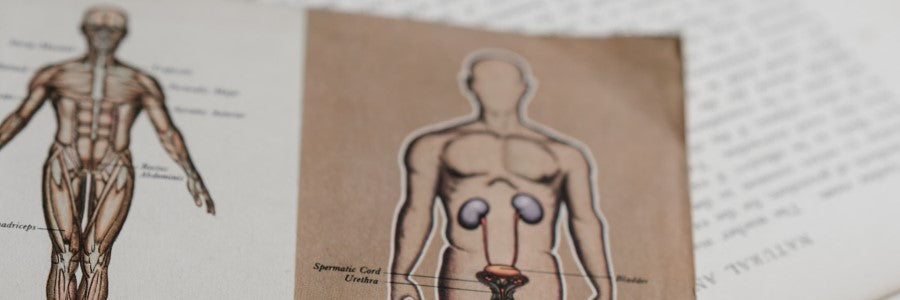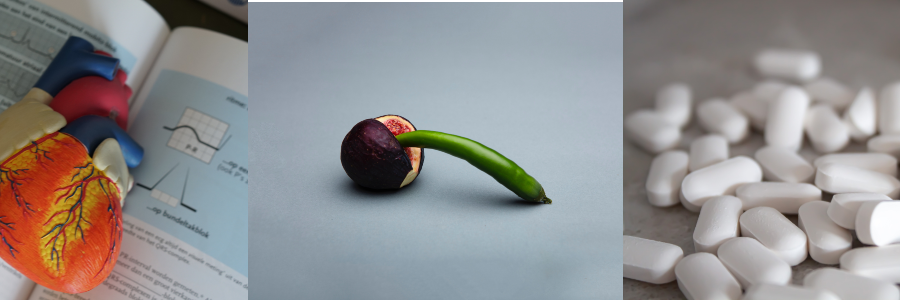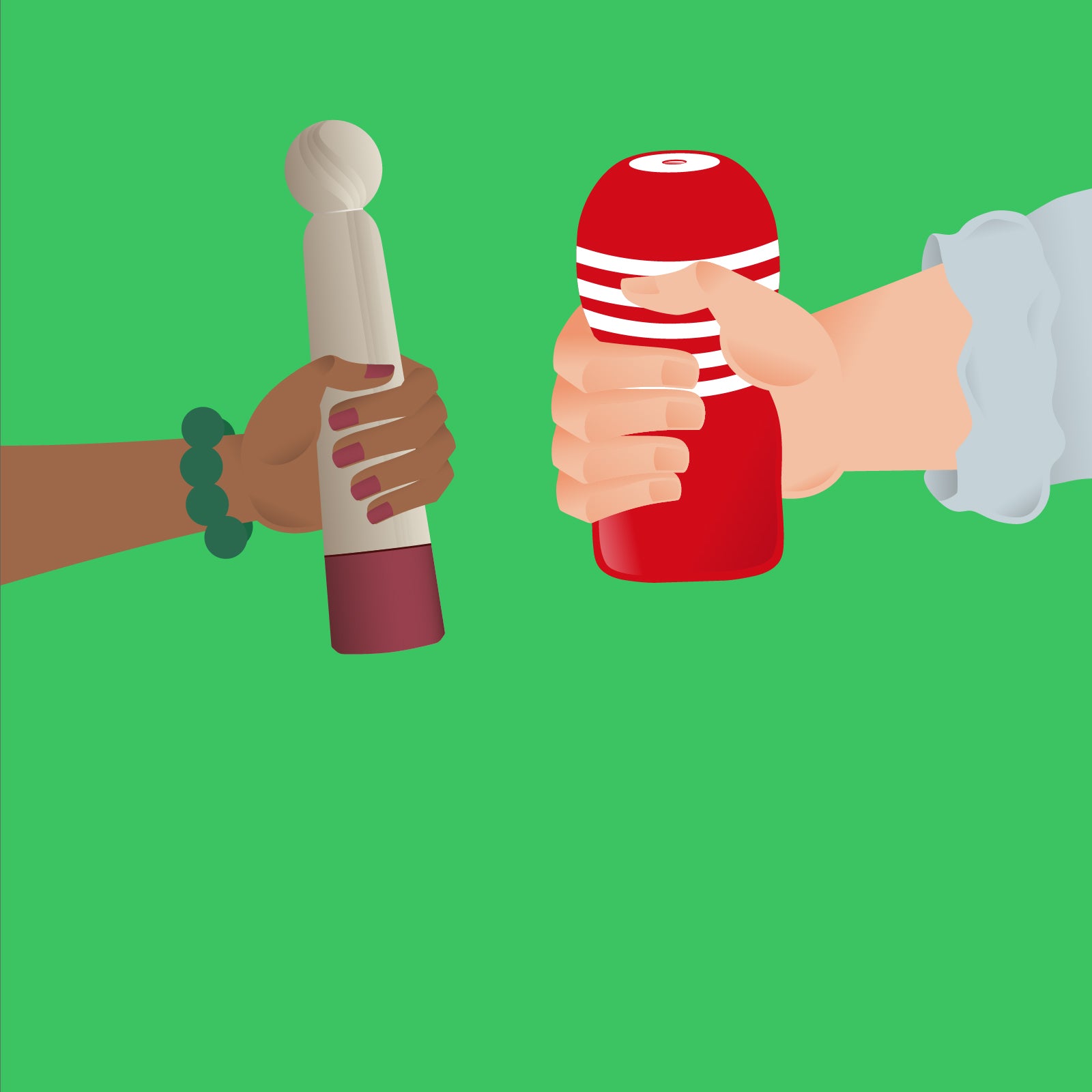
Genital Anatomy FAQ
People worry about all kinds of things, but sometimes due to embarrassment or fear of sounding ignorant, they cannot ask those close to them. These are of course questions about ‘down there’. Both peace of mind and sexual/genital health are very important, so we hope to cover the most common questions people have.
For issues specific to genitalia, please have a look at our Penile Anatomy and Vaginal Anatomy blogs.

Content
Is this an Issue?

It is an unfortunate fact that many people are never quite sure if everything is alright with their private parts. Sex ED can be too narrow in its scope to cover all topics, leaving a generation unaware of just how much they don’t know, and unable to ask friends as they are also in the same situation.
Knowing signs to look for, to tell you that something is amiss can be great at providing peace of mind as well as getting help early in case of any problems, as well as just knowing what is ‘normal’ can help you feel less self-conscious.
With that said, let us look at some frequently asked questions:
Penis Problems

What is Phimosis?
Phimosis is when the foreskin cannot be pulled back from the head of the penis. In many cases it is perfectly normal for the foreskin to not be able to be pulled back before puberty. In most cases the problem will resolve itself over time, but if there are any complications (in urinating, ejaculating or infections) it is best to see a doctor.
Is pee stored in the balls?
Contrary to some memes, pee is not stored in the balls, it is stored in the bladder. The testicles (balls) produce sperm.
What comes out when I ejaculate?
During ejaculation, a mixture of different fluids is released as semen: sperm from the testicles, seminal fluid to support the sperm, a milky-white, alkaline fluid from the prostate which helps motility of sperm and survival in the acidic environment of the vagina, and ‘pre-cum’ from the Cowper’s gland. Read more in our Penile Anatomy blog.
Is it bad that I cum too quickly/late?
This is difficult to answer, as it depends on what you want out of sex. When surveyed, people said that the optimal time for sex was between 7-13 minutes, although they also said 10-30 minutes was too long and 1-2 minutes was too short. However, these times do not take into account foreplay, and more important than time is open communication with your partner about what each of you wants out of the experience. If you are in the extremes of duration, you might have an ejaculation disorder, and if it is causing issues, you should speak to a medical professional.
Is it possible to break your penis?
Yes, although there is no bone in the penis that can break, the cylinders in the penis that fill with blood during erection (corpus cavernosum) can rupture if suddenly bent. Often times this happens during sex when the penis slips out of the vagina and is thrust against the hard pelvis, or from aggressive forms of masturbation.
If there is a cracking sound, and/or pain, inflammation and discoloration then seek medical help immediately.
Should I be worried about size?
One thing to note, is that most people think the average penis size is longer than it is. Most believe the average length is 6 inches, when in actual fact it is 5.1-5.5 inches. As to if you should be worried about size? The answer appears to be no. 77% of women said that size is unimportant in a partner.
I have small yellow bumps down there, should I be worried?
These are called Fordyce spots, and are purely cosmetic, and not a health concern. They are oily glands in the skin, and can be found on different parts of the body. As always, if these are a concern to you, or if they suddenly change in appearance, it is best to talk to a doctor to set your mind at rest, .
Vaginal Vexations
 Photo credit: letstalksex.net
Photo credit: letstalksex.net
What exactly is the hymen, and can you tell if someone is a virgin from it?
The hymen is a thin piece of tissue partially covering the vaginal opening. It is not an indicator of virginity, as it can come in many different shapes and sizes, and can be torn from various physical activities such as masturbation or exercise. You can read more on our blog here.
Is it the same hole for pee and sex?
No, these are 2 different openings, pee comes from the urethra (connected to the bladder) and is located above the vaginal opening, which leads to the uterus. You can read a more in depth blog about the anatomy of the vagina here.
Where/what is the clitoris?

The glans clitoris is the external part of a larger structure, located above the vulva. It is full of nerve endings that provide pleasure. The rest of the structure (corpus cavernosum) stretches out internally, and fills with blood during arousal.
Should I be concerned about the smell of my vagina?
The vagina naturally has a smell, and it is different for everyone. For the most part it is nothing to worry about, as it comes naturally from the bacteria, and trying to get rid of it can upset the delicate pH balance of the vagina. However, if there is a strong, unpleasant odor (such as the smells listed here) then it is best to speak to a medical professional, especially if there are other symptoms such as pain or abnormal discharge.
Is it a problem if my labia are too big?
There is no ‘right’ size for the labia. Both the outer labia majora and the interior labia minora are there to protect the clitoris, urethra and vaginal opening.
I am painfully tight, which makes insertion (penis, tampon, etc.) difficult. What can I do?
This sounds like vaginismus, a condition of spasms in the pelvic floor muscles, where it becomes difficult or impossible to insert anything in the vagina due to tensed muscles or pain. There are a variety of symptoms and causes (both mental and physical) of vaginismus. As this condition can have an impact on daily life, from physical pain to mental anguish, it is best to see a medical professional about treatments.
Miscellaneous Misgivings

Why are genitals so different?
While slight variations from person to person are natural, the anatomy for all of us may be closer than you think! In fact, during the early stages of prenatal development, the cluster of cells that forms the embryo are similar. However, certain parts begin to develop differently between the sexes as the fetus grows. For example, the gonads can stay inside the body and become ovaries, or descend to form the testes. Folds can develop into the labia majora/minora, or into the scrotum/skin of the penis respectively. One of the more obvious examples is the clitoris and clitoral hood, compared to the glans (head) of the penis and the foreskin.
How do I know if I have a sexually transmitted infection?
Due to the large number of infections, as well as their varied symptoms, it can be hard to specify them all in one blog post. However, common symptoms to look out for are:
- Pain (can be anywhere, but especially in the genital area)
- Itchiness/irritation
- Rashes
- Unusual discharges (amount/color/etc.)
- Pain during sexual intercourse
- Painful urination
- Swelling (especially of the genital area)
It is best to see a medical professional if you have any of these symptoms, as well as schedule regular checks, as many diseases are asymptomatic (show no symptoms).
Summary
Hopefully you now know more about the human body, and feel more confident in yourself, as well as your ability to know if something is actually in need of specialist attention. Many things that most people worry about are perfectly natural, and just some knowledge can alleviate anxiety and embarrassment.
As always, if in doubt, talk to your doctor!






